#automotive pop culture
Explore tagged Tumblr posts
Text
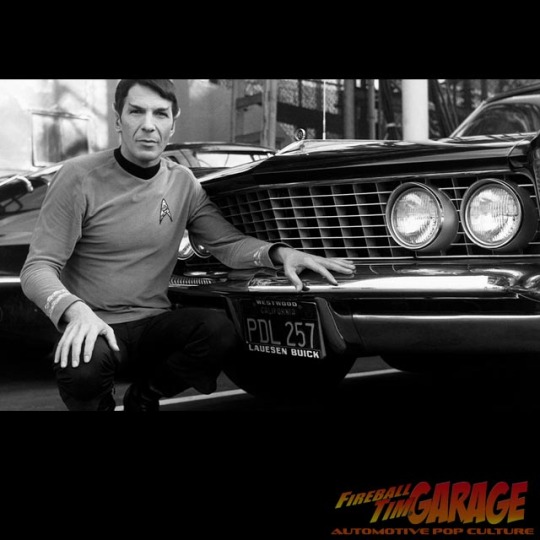

Yes, SPOCK (Leonard Nimoy) loved CARS. I met him in 1976 in Ojai through a family friend (Actor Jeff Corey) to find out that his ears WEREN'T REAL! Imagine my horror... But I did also find out that he was a CAR GUY through and through. Especially the RIVS...
But imagine if they had this Fireball Hot Rod STARSHIP ENTERPRISE!! They would Boldly Go where no one would want to go... Cool Car, Bad Habits. #fireballtim #automotivepopculture #conceptart #fireballtimgarage
22 notes
·
View notes
Text

#Tesla and Elon Musk Tags:#Cybertruck#ElonMuskArt#TeslaArt#ElectricVehicles#ElonMuskFans#TeslaCybertruck#SpaceXInspired#MuskMoments#TechAndArt#Automotive and Futurism Tags:#CarArt#FuturisticVehicles#ElectricCarCulture#AutoIllustration#FuturismInArt#TechInnovation#ModernVehicles#CyberpunkAesthetic#Artistic Style Tags:#PopArtStyle#MarkerArt#HandDrawnArt#VividColors#ContemporaryArt#CreativeIllustration#DynamicArt#VisionaryArt#General and Pop Culture Tags:#TechCulture
3 notes
·
View notes
Text
Tom Cruise Blacklisted by Bugatti: The Car Door Debacle
In 2022, Top Gun: Maverick made waves. It became the highest-grossing film of the year. And who was at the center of it all? None other than the legendary Tom Cruise! With dreams of shooting a movie in space, Cruise has become a hot commodity in Hollywood. Brands were lining up to work with him, except for one—Bugatti. Yes, you heard that right! The French luxury carmaker has put Cruise on its…
#Automotive Humor#Bugatti#Car Door Drama#Car Fails#Celebrity Life#Celebrity News#Entertainment News#Ferrari#Funny Celeb Moments#Hollywood Gossip#justin bieber#Katie Holmes#Kim Kardashian#Luxury Brands#Luxury Cars#Mission Impossible#Movie Premiere#Pop Culture#Red Carpet Fails#Tom Cruise
1 note
·
View note
Text
#cinematic vehicles#classic hollywood rides#classic movie cars#famous cars in cinema#famous cars in film#famous movie cars#famous on-screen cars#hollywood automotive legends#hollywood car history#hollywood car icons#hollywood's best cars#iconic film cars#iconic hollywood cars#iconic vehicles in movies#legendary film vehicles#legendary hollywood cars#movie car culture#pop culture cars#pop culture vehicles#top movie cars
0 notes
Text
#cinematic vehicles#classic hollywood rides#classic movie cars#famous cars in cinema#famous cars in film#famous movie cars#famous on-screen cars#hollywood automotive legends#hollywood car history#hollywood car icons#hollywood's best cars#iconic film cars#iconic hollywood cars#iconic vehicles in movies#legendary film vehicles#legendary hollywood cars#movie car culture#pop culture cars#pop culture vehicles#top movie cars
0 notes
Text
Can we as a people just ask the Automotive industry to smarten tf up?! Why build trucks you need to hoist just to change a light??
0 notes
Text
Mario Car(t)
The owner sure loves Mario Kart, can you tell? Name: Mario Car(t) Lat, Long: 51.3661062,-0.279214, Location: Epsom, England

View On WordPress
1 note
·
View note
Text

1979 Pontiac Firebird
The 1979 Pontiac Firebird stands as a symbol of the late 1970s American muscle car era, a time when bold styling and performance were key selling points. The Firebird, produced by Pontiac from 1967 to 2002, had evolved significantly by the time it reached its 1979 iteration, marking one of its most memorable and iconic versions.
The 1979 Firebird came in several models, including the base Firebird, the luxurious Esprit, the sporty Formula, and the high-performance Trans Am. Each model had its unique appeal, but the Trans Am was undoubtedly the star of the lineup. Known for its aggressive styling, the Trans Am featured a distinctive "screaming chicken" hood decal, a hallmark that became synonymous with the Firebird brand. This large, flamboyant decal stretched across the hood, making an unmistakable statement about the car’s performance pedigree.
Under the hood, the 1979 Firebird offered a range of engine options. The base models came with a 3.8-liter V6 or a 4.9-liter V8, while the more performance-oriented Trans Am could be equipped with a 6.6-liter V8 engine, known as the "403" for its cubic inch displacement. This engine produced 185 horsepower, a respectable figure for the era, and provided the Trans Am with a powerful and throaty exhaust note that thrilled enthusiasts.
The interior of the 1979 Firebird was designed with both comfort and style in mind. The cockpit-style dashboard was driver-focused, with gauges and controls angled towards the driver for ease of use. Bucket seats, often upholstered in vinyl or optional cloth, provided a sporty feel, while the T-top roof, available on the Trans Am, allowed for an open-air driving experience that was perfect for cruising on sunny days.
In addition to its performance and styling, the 1979 Firebird also benefited from the popularity it gained through pop culture. The Firebird Trans Am was famously featured in the 1977 film "Smokey and the Bandit," starring Burt Reynolds. This movie immortalized the Trans Am as a symbol of rebellious spirit and high-speed chases, further cementing its status as a cultural icon.
Despite the challenges of the late 1970s, including increasing emissions regulations and the oil crisis, the 1979 Pontiac Firebird managed to uphold the spirit of the muscle car. Its blend of striking design, performance capabilities, and cultural significance make it a beloved classic among car enthusiasts. Today, well-preserved and restored Firebirds from 1979 are highly sought after by collectors, serving as a reminder of a bygone era of American automotive history where style and performance reigned supreme.
The legacy of the 1979 Pontiac Firebird continues to inspire car lovers, and its presence in the automotive world remains strong, a testament to its enduring appeal and the indelible mark it left on the muscle car landscape.
441 notes
·
View notes
Text
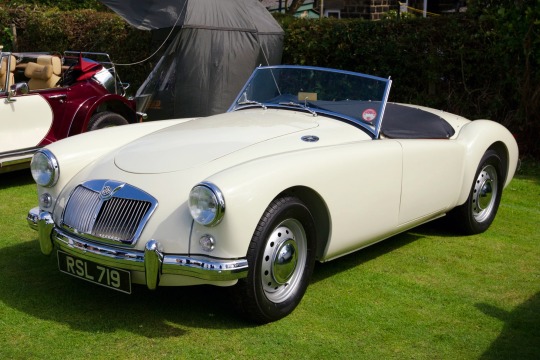
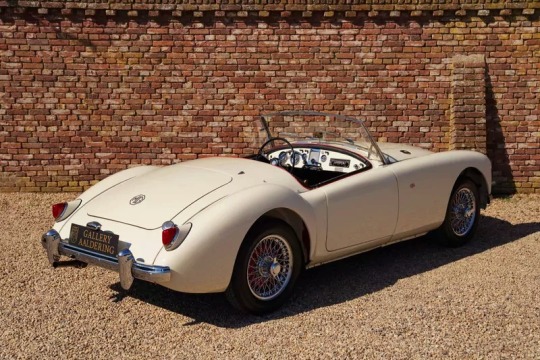
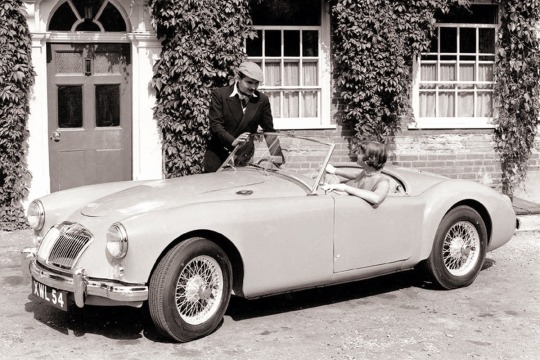


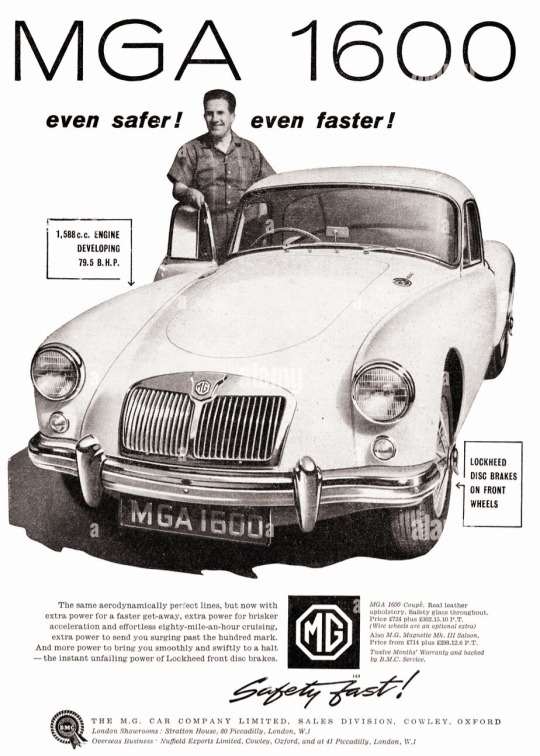
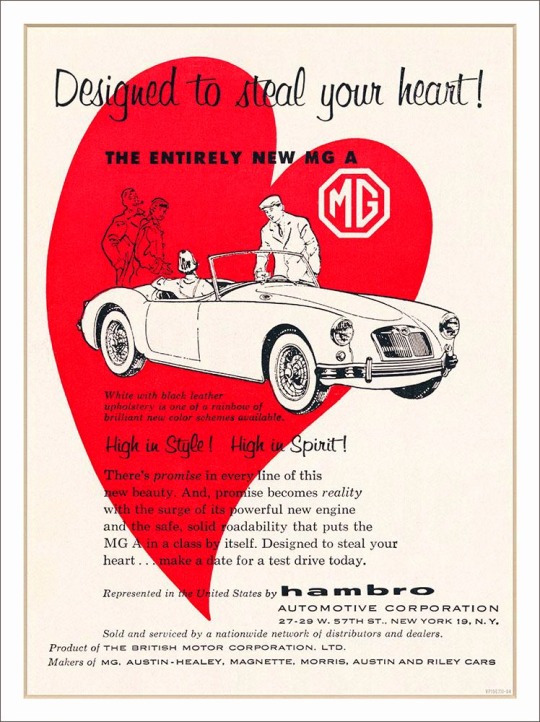

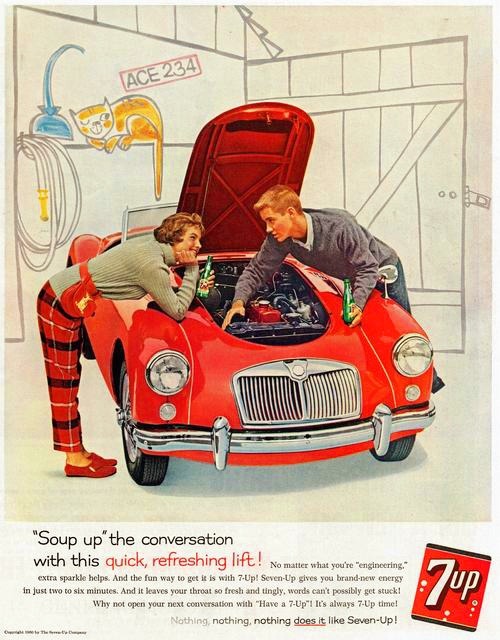
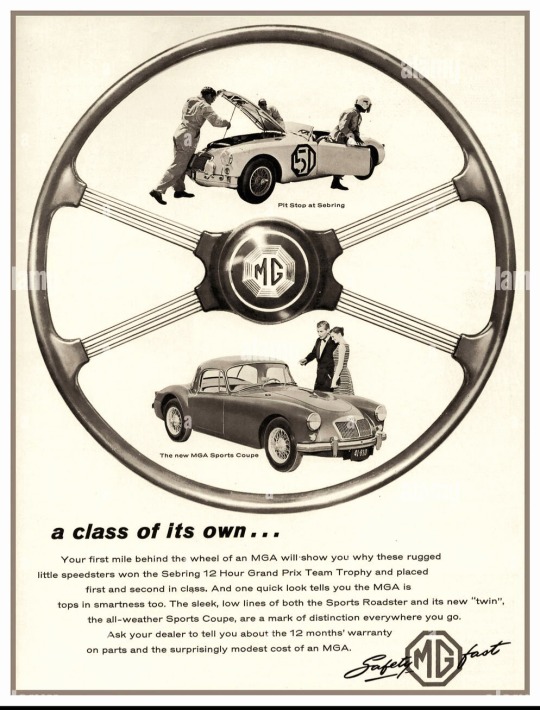
🇬🇧 Explore the captivating history of the MG MGA—a timeless classic that embodies the essence of British automotive craftsmanship! Introduced in the 1950s, the MGA made waves with its striking design and exhilarating performance, captivating drivers around the globe.
👉 The MG MGA marked a significant milestone for MG sports cars. Announced on 26 September 1955, the car was officially launched at the Frankfurt Motor Show. With its sleek contours, graceful curves, and distinctive grille, the MGA epitomized elegance and sophistication on the open road.
🛞 The MGA design dates back to 1951 when MG designer Syd Enever created a streamlined body for George Philips' TD Le Mans car. As it was so different from the older MG models, it was called the MGA, the "first of a new line" to quote the contemporary advertising. There was also a new engine available; therefore, the car did not have the originally intended XPAG unit but was fitted with the BMC B-series engine allowing a lower bonnet line.
🚗 Underneath its sleek exterior, the MGA boasted a lineup of powerful engines, delivering an unforgettable driving experience characterized by agility and precision. Whether navigating winding country roads or zipping through city streets, the MGA offered a thrilling ride that left a lasting impression.
👑 The MG MGA quickly gained iconic status, earning recognition in pop culture and becoming a symbol of automotive excellence. The MGA has been raced extensively in the U.S. since its 1955 introduction and with considerable success. In Sports Car Club of America competition, the MGA has won numerous regional and national championships.
🌟 Whether admired for its iconic aesthetics, dynamic performance, or rich heritage, the MG MGA continues to evoke passion and admiration among collectors and enthusiasts worldwide.
#brits and yanks on wheels#retro cars#transatlantic torque#vehicle#cars#old cars#brands#companies#automobile#english cars#made in uk#made in england#england#mg#mg motor#british motor corporation#british cars#british leyland#mg mga#mg rover group#sport cars#sports cars#race car#racing#sports car club of america#design#designer#championship#exterior#syd enever
14 notes
·
View notes
Text
Discover the World of Limited Edition Diecast Models
Diecast model collecting is more than a hobby—it’s a passion fueled by precision, artistry, and exclusivity. For collectors, limited edition diecast models represent the pinnacle of craftsmanship and rarity. At Australian Custom Diecast, enthusiasts can find an exceptional selection of limited-edition models tailored to various themes and interests.
What Makes Limited Edition Diecast Models Special?
Exclusivity Limited edition diecast models are produced in small quantities, making them rare and highly sought after by collectors. Owning one of these exclusive models adds a sense of uniqueness and prestige to your collection.
High-Quality Craftsmanship Limited edition models are often crafted with extra attention to detail. From lifelike interiors to meticulously painted exteriors, these models showcase the skill and precision that set them apart from standard editions.
Collector Value Over time, limited edition diecast models can appreciate in value, especially if they’re well-preserved and in original packaging. They’re not just collectibles—they’re investments.
Explore Limited Edition Diecast Models at Australian Custom Diecast
At Australian Custom Diecast, you’ll discover a wide range of limited edition diecast models designed to cater to every collector’s taste. Their offerings include:
Custom Diecast Trucks: Featuring iconic brands like Kenworth and Mack in exclusive designs.
Unique Cars: From vintage classics to modern supercars, each model is a testament to automotive excellence.
Themed Diecast Models: Celebrating sports teams, beverage brands, and other pop culture icons in limited editions.
Why Choose Australian Custom Diecast for Limited Editions?
Exclusive Designs Many of the limited edition models available at Australian Custom Diecast are custom-made, ensuring that your collection includes one-of-a-kind pieces.
Personalization Options Looking for something truly unique? The team at Australian Custom Diecast welcomes custom orders, allowing you to design a limited edition model that reflects your personal style or interests.
Passion for Collectibles With a deep love for diecast models, Australian Custom Diecast is committed to delivering high-quality products that resonate with collectors worldwide.
Tips for Collecting Limited Edition Diecast Models
Do Your Research Before purchasing, learn about the model's production run, manufacturer, and design details to ensure its authenticity and value.
Store with Care Proper storage is essential to maintain the condition and value of limited edition models. Keep them in a cool, dry place and avoid excessive handling.
Join the Community Engage with fellow collectors through forums, social media, and groups like the Australian Custom Diecast community to stay informed about new releases and share your passion.
Conclusion
Limited edition diecast models are more than just collectibles—they’re a celebration of artistry, rarity, and personal passion. Whether you’re a seasoned collector or just starting your journey, Australian Custom Diecast offers an impressive range of limited edition models that cater to all tastes and interests.
Explore their exclusive collection today at Australian Custom Diecast and discover the perfect addition to your collection.
2 notes
·
View notes
Text

#VoxPop The long-running radio interview program Vox Pop highlighted many aspects of American culture during the 1930s and 1940s. One of the show’s favorite themes was college life. From 1940 to 1947, Vox Pop broadcast from 23 college campuses all over the country, interviewing students, faculty, administrators, and coaches.
On January 25, 1940, Vox Pop broadcast from Rutgers University in New Brunswick, New Jersey. Here, hosts Parks Johnson and Wally Butterworth pose with Jean Wiltberger at the Delta Kappa Epsilon Fraternity House while admirers look on. Wiltberger, a student at Northwestern University, had recently been selected as the “typical American co-ed.”
After graduating from Northwestern, Wiltberger married fellow student Robert Osborn. During World War II, she worked at the Studebaker automotive plant. After the war, she and Robert settled in Fort Collins, Colorado. She retired in San Diego, California, where she died in 2017 at the age of 96.
Source: Parks Johnson collection on Vox Pop
3 notes
·
View notes
Text
Welcome to AUTOMOTIVE POP CULTURE DAILY! Happy Friday, folks... and let's get 'er blastin! Off the line, we've got a QUESTION? In the 60's, Fireball Pop hired George Barris to build this one-off Kustom Hot Rod for the ELVIS film, "EASY COME, EASY GO,"... which he wrote. Later, the car was used on the TV Show BATMAN as the JOKERMOBILE. Should Fireball SKETCH THIS UP? LEAVE A COMMENT BELOW or make a SUGGESTION for something you'd like to see! fireballtimgarage.art
DID YOU KNOW?? "Easy Come, Easy Go" was Elvis's final film with Paramount Pictures and his last one with Hal Wallis, which was followed by PARADISE, HAWAIIAN STYLE & ROUSTABOUT which Fireball Pop also wrote! But Elvis was no longer as interested in his film career and the music soundtracks he had to record for Paramount. He just wanted to sing Well, I guess that "Easy Come, Easy Go" was an appropriate title!

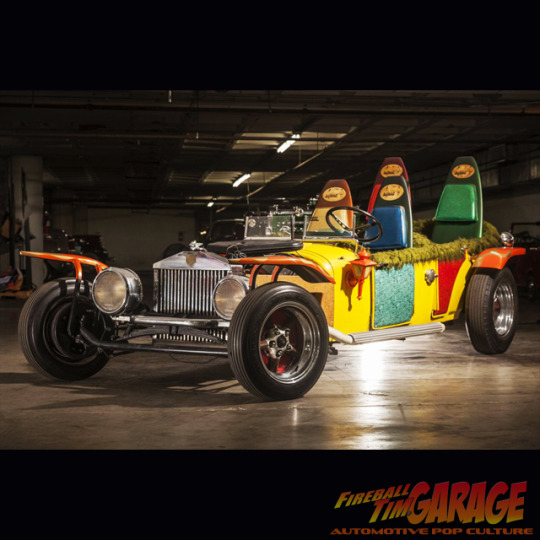
Subscribe to the FIREBALL BLOG at fireballtim.com to get more AUTOMOTIVE POP CULTURE ART! #fireballtimgarage #automotivepopculture
4 notes
·
View notes
Text
The 1982 DeLorean DMC-12: A Timeless Icon of Automotive History
The 1982 DeLorean DMC-12 is not just a car; it is a cultural icon that has captivated the hearts and minds of enthusiasts for decades.

Its unique design, storied history, and prominent role in popular culture have cemented its status as one of the most beloved vehicles of all time.
Let's explore what makes the DeLorean DMC-12 so special and delve into its fascinating history.
A Visionary's Dream

The DeLorean DMC-12 was the brainchild of John DeLorean, a maverick automotive engineer and executive who had previously made his mark at General Motors. DeLorean's vision was to create a car that would break away from the conventional designs of the time and embody the future of automotive engineering. With its sleek, stainless steel body and gull-wing doors, the DMC-12 was unlike anything on the road when it was unveiled in 1981.
Design and Innovation

One of the most striking features of the DeLorean DMC-12 is its stainless steel body. This unpainted, brushed metal finish gives the car a futuristic and timeless appearance. The gull-wing doors, which open upwards rather than outwards, add to the vehicle's unique aesthetic and have become one of its defining characteristics. The design was the work of Italian designer Giorgetto Giugiaro, whose vision for the DMC-12 was to create a car that looked like it was from another era.

The DMC-12 was powered by a 2.85-liter V6 engine, developed in partnership with Peugeot, Renault, and Volvo. While not a powerhouse by modern standards, the engine provided adequate performance for its time and contributed to the car's distinctive driving experience.
The Rise and Fall of DeLorean Motor Company

The story of the DeLorean DMC-12 is closely tied to the tumultuous history of the DeLorean Motor Company (DMC). Founded in 1975, DMC faced numerous challenges, including financial difficulties and production delays. Despite these obstacles, the company managed to produce approximately 9,000 DMC-12s between 1981 and 1983.
However, financial woes and a high-profile legal scandal involving John DeLorean ultimately led to the company's bankruptcy in 1982. Despite the company's short-lived existence, the DMC-12 had already made a lasting impact on the automotive world.
Cultural Icon and Enduring Legacy

The DeLorean DMC-12's status as a cultural icon was solidified by its starring role in the "Back to the Future" film trilogy. In the movies, the DMC-12 was transformed into a time machine by the eccentric inventor Doc Brown, played by Christopher Lloyd. The car's futuristic design and pivotal role in the films endeared it to a whole new generation of fans and ensured its place in pop culture history.
Beyond its cinematic fame, the DeLorean DMC-12 has remained a symbol of 1980s nostalgia and automotive innovation. Its distinctive design and limited production numbers have made it a sought-after collector's item. Enthusiast clubs and organizations dedicated to preserving and celebrating the DMC-12 can be found around the world, ensuring that the legacy of this unique vehicle continues to thrive.
youtube
The 1982 DeLorean DMC-12 is more than just a car; it is a testament to the vision and ambition of its creator, John DeLorean. Its innovative design, storied history, and enduring appeal have made it a beloved icon in both the automotive world and popular culture. Whether you admire it for its striking appearance, its role in cinematic history, or its place in the annals of automotive innovation, the DeLorean DMC-12 is a vehicle that continues to captivate and inspire.
Find it at:
2 notes
·
View notes
Text
Unleashing the Legend: The FD3S RX-7 and its Timeless Allure
Introduction In the pantheon of Japanese sports cars, few names stir the soul like the Mazda RX-7, specifically its third generation, the FD3S. Since its debut in the early 1990s, the FD3S RX-7 has captivated enthusiasts with its unique blend of style, performance, and technological innovation. This article dives into the heart of what makes the FD3S RX-7 a timeless icon in the JDM car scene.
Design and Style The FD3S RX-7 is a masterpiece of automotive design. Its sleek, flowing lines and aggressive stance make it instantly recognizable. The car's design was ahead of its time, featuring a lightweight, aerodynamic body that still looks modern today. The pop-up headlights, a nostalgic yet defining feature, add to its charm, embodying the spirit of the 90s sports car era.
Rotary Revolution: The Heart of the RX-7 At the core of the FD3S's allure is its unique rotary engine. The 13B-REW, a twin-turbocharged rotary engine, set the RX-7 apart from its peers. This compact yet powerful engine delivers a high power-to-weight ratio, providing an exhilarating driving experience. The rotary engine's smooth power delivery and high-revving nature make the RX-7 not just a car, but an experience to drive.
Performance and Handling The FD3S RX-7 is renowned for its exceptional handling characteristics. Thanks to its lightweight construction and well-balanced chassis, it offers a driving experience that is both engaging and accessible. The RX-7's handling is enhanced by its advanced suspension system and its low center of gravity, making it a favorite among track enthusiasts and casual drivers alike.
Cultural Impact and Legacy Beyond its technical prowess, the FD3S RX-7 holds a special place in automotive culture. It has been a staple in motorsports, drifting scenes, and popular media, contributing to its legendary status. The RX-7's appearances in movies, video games, and TV shows have cemented its image as a symbol of speed and style.
Modifications and the Enthusiast Community The FD3S RX-7 is not just a car; it's a canvas for personal expression. The enthusiast community has embraced this vehicle, leading to a wide range of modifications. From engine swaps to body kits, the possibilities are endless. This level of customization has kept the RX-7 alive and relevant, even decades after its production ended.
Conclusion: The Eternal Charm of the FD3S RX-7 The FD3S Mazda RX-7 is more than a car; it's a legend. Its combination of design, performance, and unique rotary engine technology makes it a standout in the JDM scene. Its influence extends beyond the automotive world, becoming a cultural icon. For car enthusiasts, the FD3S RX-7 is not just a memory of the past but a continuing source of inspiration and passion. In the world of JDM cars, the RX-7 remains an eternal favorite, a symbol of a bygone era that continues to excite and inspire.
2 notes
·
View notes
Text
The Most Iconic 16 Hollywood Cars: Pop Culture Revamp
Ever wonder what makes Hollywood cars truly iconic? From the roaring engines that defined eras to the sleek designs that stole every scene, Hollywood has given us some unforgettable rides. Buckle up as we take a journey through the 16 most legendary Hollywood cars that not only ruled the silver screen but also became timeless symbols of pop culture.
😀 Let’s explore the Hollywood Cars wonders 😀
Hollywood has gifted us with some of the most iconic Hollywood cars ever to grace the silver screen. These vehicles aren’t just modes of transportation—they’re characters in their own right, carrying with them a legacy that transcends the films they appear in. From the time-travelling DeLorean to the gadget-laden Aston Martin DB5, these Hollywood cars have become ingrained in popular culture, influencing everything from car designs to video games. Let’s take a ride through the world of Hollywood’s top cars and see why these vehicles have become legends.
#cinematic vehicles#classic hollywood rides#classic movie cars#famous cars in cinema#famous cars in film#famous movie cars#famous on-screen cars#hollywood automotive legends#hollywood car history#hollywood car icons#hollywood's best cars#iconic film cars#iconic hollywood cars#iconic vehicles in movies#legendary film vehicles#legendary hollywood cars#movie car culture#pop culture cars#pop culture vehicles#top movie cars
0 notes
Text
The Most Iconic 16 Hollywood Cars: Pop Culture Revamp
Ever wonder what makes Hollywood cars truly iconic? From the roaring engines that defined eras to the sleek designs that stole every scene, Hollywood has given us some unforgettable rides. Buckle up as we take a journey through the 16 most legendary Hollywood cars that not only ruled the silver screen but also became timeless symbols of pop culture.
😀 Let’s explore the Hollywood Cars wonders 😀
1. The Batmobile
2. DeLorean from Back to the Future
3. Aston Martin DB5 from James Bond
4. KITT from Knight Rider
5. Herbie from The Love Bug
6. General Lee from The Dukes of Hazzard
7. Ecto-1 from Ghostbusters
8. Greased Lightning from Grease
9. The Mystery Machine from Scooby-Doo
10. Ford Mustang from Bullitt
11. Lightning McQueen from Cars
12. Mach 5 from Speed Racer
13. Charger from Fast & Furious
14. Which Hollywood Cars Have Inspired NASCAR Racing Video Games?
15. Trans Am from Smokey and the Bandit
16. Christine from Christine
Conclusion
#cinematic vehicles#classic hollywood rides#classic movie cars#famous cars in cinema#famous cars in film#famous movie cars#famous on-screen cars#hollywood automotive legends#hollywood car history#hollywood car icons#hollywood's best cars#iconic film cars#iconic hollywood cars#iconic vehicles in movies#legendary film vehicles#legendary hollywood cars#movie car culture#pop culture cars#pop culture vehicles#top movie cars
0 notes